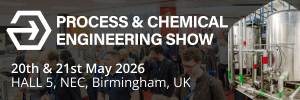Honeywell: three batch technologies to maximise productivity and profitability
This article was written by Chris Peters, Experion product manager at Honeywell Process Solutions.
Productivity and profitability: two words that are constantly at the forefront of every manufacturer’s mind. How can I make my operations, systems and processes more productive and profitable? What new tools are available to help improve productivity and increase profitability?
In industries like chemicals, pharmaceuticals, and food and beverage, these concepts play out against an increasing demand for manufacturers to be able to do more with less. Output and quality are expected to be higher, while resources continue to shrink. As a result, companies are examining the efficiency of their batch applications and how those can directly impact business productivity and profitability.
Honeywell recently explored these dynamics by surveying batch manufacturers for a Honeywell Observational Voice of the Customer (OVOC) study. The results revealed some pain points:
- Lack of visibility: many control room operators lack adequate visibility or control over their batch processes, often due to limits in available technology.
- Unpredictability: There is an element of (unpleasant) surprise for some operators, as they often don’t know what tasks are coming when, or can’t foresee delays that could stop or hinder processes.
- Ineffectual solutions: many also reported that even when they knew about a problem, the troubleshooting methods they used were ineffective.
A common cause for these pain points is the misalignment or lack of synergy between process control systems and batch operations. Essentially, the efficiency of the former directly impacts the bottom line of the latter, so getting the two to work in harmony is critical for businesses to maximise productivity and profitability.
A new generation of technologies is helping to solve these pain points.
Visualisation Solutions
Automation suppliers like Honeywell are introducing software systems that combine distributed control, batch automation and advanced visualisation technology to enhance operators’ view and understanding of batch production happening at their sites.
To help operators improve visibility, Honeywell developed Experion Batch, which uses a human-machine interface with visual analytics to help plant operators better anticipate and respond to atypical situations. Engineers use the visualisation to understand what happened in the past, which helps create predictive views of what might happen in the future. Field engineers can also access visual intelligence through a mobile app. The app keeps personnel connected by providing a high-level view of production statuses.
Such visualisation provides ease of mind, so engineers can take on parallel tasks knowing that there is sufficient time before the next action is required. They can also solve pervasive problems through guided troubleshooting, returning to production with minimal downtime (a common concern for all batch operators). In addition, operators can understand how a current batch is performing against a typical batch. This can help anticipate issues, decrease cycle time and improve productivity.
ISA88-aligned distributed batch programs
The traditional design of batch operation is a centralised batch engine. However, manufacturers would benefit from a more progressive distributed batch environment that is more aligned with ISA-88 philosophy.
This kind of system could solve a number of the pain points identified by respondents. Manufacturers don’t need to rely on a single piece of equipment for plant operations, but can instead minimise risk by placing batch functionality in unit-aligned controllers. So if a unit controller is suddenly out of commission, the other unit operations aren’t affected.
If this seems confusing, picture a chandelier in which one bulb has burned out. Replacing it with a new one doesn’t affect the rest of the bulbs from continuing to light up. Distributed batch designs work the same way.
They also don’t require batch servers, so there is no required upkeep for those additional pieces of equipment. In tandem, redundant modular controllers that are designed for batch operations and sequencing can deliver the power and capacity as needed in a cost-efficient manner.
Imagine a plant with a single, common database for regulatory control and batch configuration instead of operating under the tyranny of an unpredictable batch server. The controller could support all types and scopes of batch sequences—from a simple, pre-defined unit, to a control recipe derived from a master recipe complete with underlying procedures, operations, and phases.
Batch operators get a more robust performance from a controller-based system that provides a single operating and engineering platform for batch execution. Without the burden of a server, they don’t have to worry about additional maintenance, security, and communication latency issues and costs, which means more time and resources to focus on maximising productivity.
Full automation systems
In its research, Honeywell found that many facilities are running sequential-based processes that require significant fine-tuning and manual oversight. This is risky as it has the potential to create errors and inefficiencies. Instead, production should invest in full automation that allows tasks to be conducted concurrently, which would increase productivity and lower costs, according to many production leaders.
The study found that production leaders want their teams to be proactive, such as being able to anticipate upcoming work activities or identify potential production problems that could cause downtime. Instead, most are stuck in a reactive role.
Process controllers tend to be too big for the task of real unit level control, with multiple units allocated to a process controller simply because they happen to fit. This makes maintenance more complex and logistically difficult, especially when it comes time to make upgrades. An automation system utilising unit optimised controllers would enable a more flexible, unit-based approach to mitigate these challenges.
Time to invest in new technologies
Next-generation technologies that enable better virtualisation, distributed batch processing and full automation have the potential to solve the pain points identified by surveyed plant operators. They can provide new levels of availability, efficiency, productivity, and reliability, and do so by transforming the user experience into one that provides clear visuals, intuitive, touch-enabled displays, and interactive workflows. The result is batch operations that are better planned and less stressful.
Solutions that enable responsive batch processes increase throughput and asset utilisation, lower costs, and improve product quality, which in turn helps companies create better competitive differentiation.












